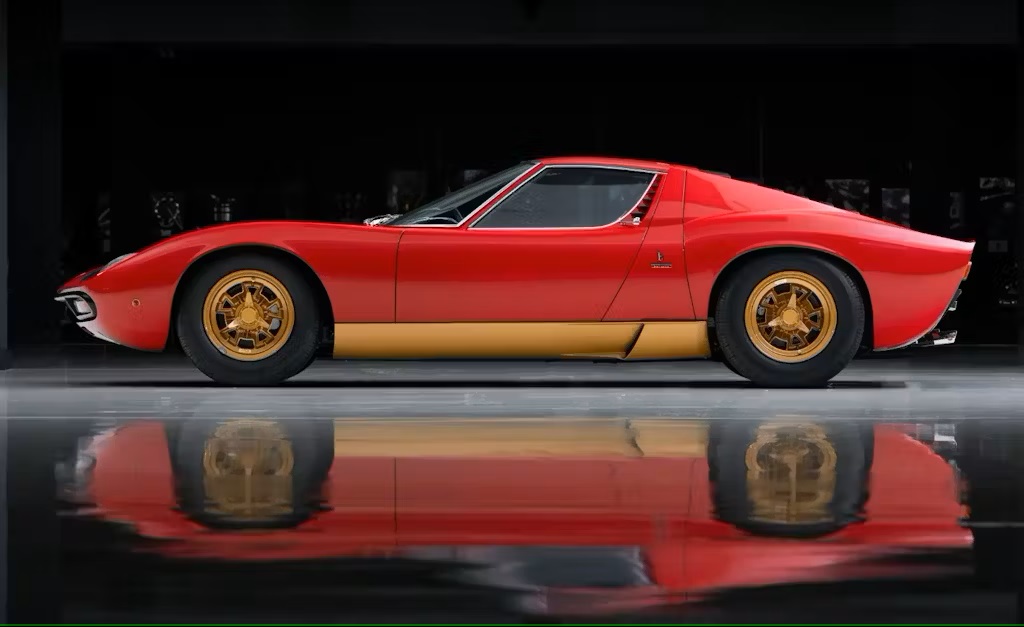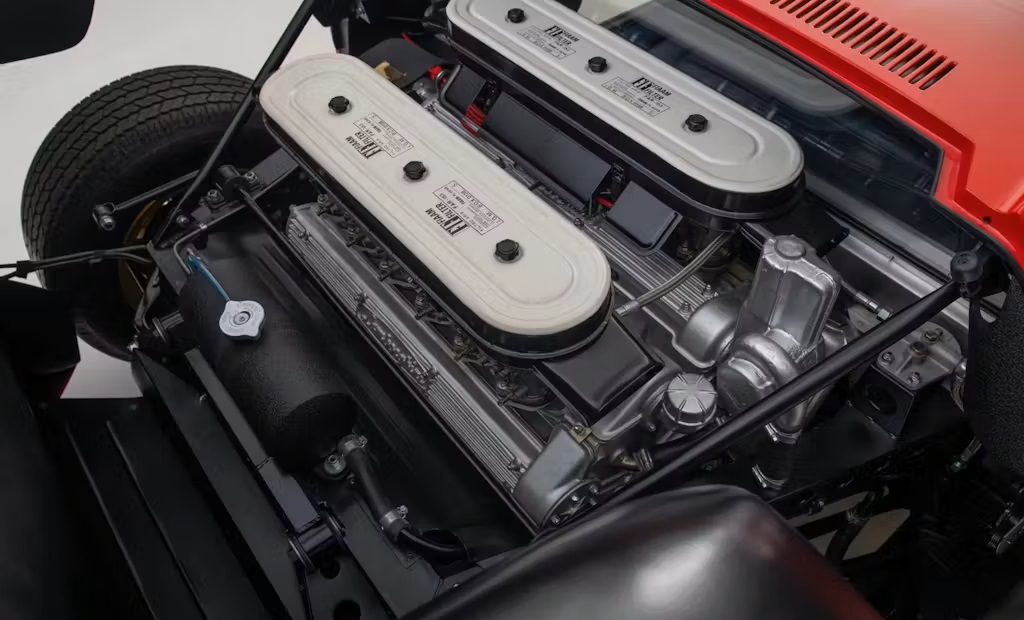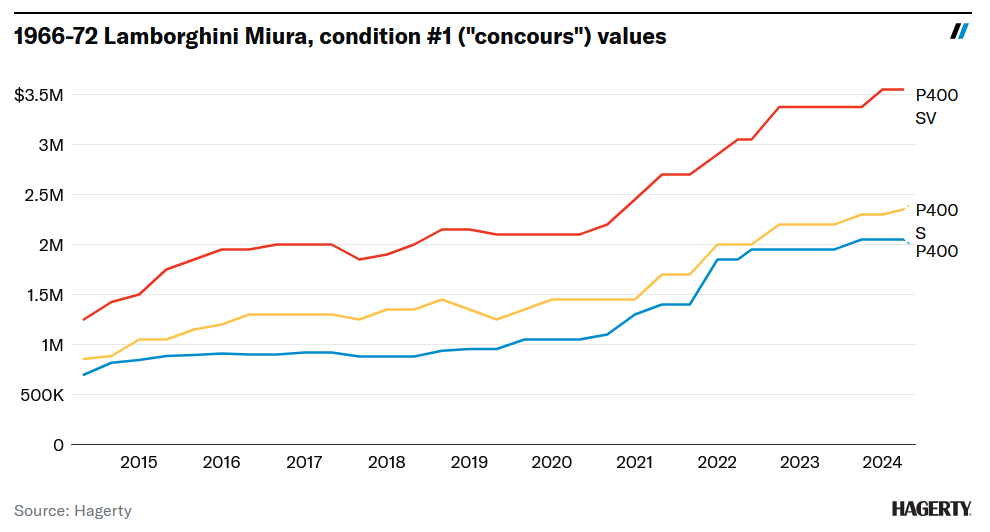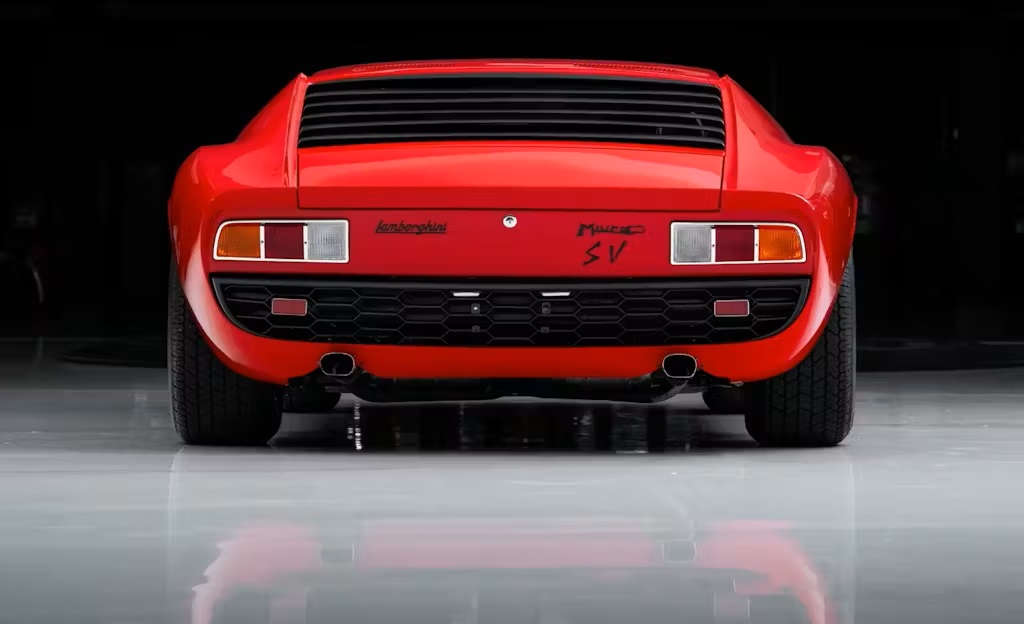Lambos were expensive this week. A 2003 Murciélago sold for $508,500, 67 percent over its #1 (“best in the world”) value in our price guide. But even more special than that Murci was a 1972 Miura P400 SV that sold for $4.9M. That’s 34 percent above its #1 value and comfortably more than the previous world record for the model, a $4.26M sale back in 2020.

What was a six-figure Italian classic 15 years ago is now, with the right specs and condition, a blue chip collectible approaching the $5M club.

The words “Lamborghini” and “supercar” tend to go hand in hand these days. Indeed, the brash, brightly colored exotics from Sant’Agata Bolognese are some of the most popular supercars out there. Throw a stone in a nice part of Miami or L.A. and you’re bound to hit one. This wasn’t the case in 1965, however—Lamborghini was a much different company back then. The tractor-turned-carmaker focused on producing small batches of refined, mature gran turismos that aimed to best Ferrari’s equivalent road cars. Frivolities like racing just weren’t part of the equation. The car that changed that philosophy, and put Lamborghini down its current loud, wedge-shaped path, was the Miura. No wonder it’s the most valuable Lamborghini of them all.
After Lamborghini’s first car—the 350 GT—began steady production in 1964, several company engineers and designers started thinking about what to do next. Everybody in the group was in their mid-20s. Ferruccio Lamborghini was 48. They were enthusiastic about racing, where mid-engine cars were dominant. Mr. Lamborghini wasn’t, and insisted on staying away from motorsport. Nevertheless, he budged and gave the team the go-ahead to develop a mid-engine sports car.

The chassis design was a monocoque with an integral roof, leaving the front and rear of the bodywork as unstressed, hinged panels. The steel chassis included drilled holes for lightness. Meanwhile, Lamborghini’s signature V-12, then displacing four liters, was a long unit. Mounting it longitudinally would have meant lengthening the wheelbase and compromising the handling. The clever solution was to mount the engine transversely in parallel with the rear axle, sort of like an Austin Mini but on a much larger scale and behind the driver instead of in front. Due to limited space, Lamborghini also fabricated a transaxle, mounted at the rear of the engine and in unit with the crankcase (like on a motorcycle), so the engine and gearbox had to share oil with each other.
A rolling chassis debuted at the 1965 Turin Auto Show, and just the naked mechanicals were enough to cause a stir and send potential customers rushing to the Lamborghini stand. But Lamborghini, still a boutique carmaker just a few years in the business, thought of the project as a promotional tool. It wasn’t just lacking a body. It didn’t even have a proper name.
When they finally decided to put this new mid-engine design into production, Bertone won the deal to design a body and gave the job to a young Marcello Gandini. The finish product debuted at the Geneva Salon in 1966 and it once again caused a stir. Its name—P400—referred to the engine placement (“P” for Posteriore), and the engines displacement of 400 deciliters. But Mr. Lamborghini, a Taurus, also wanted a proper name and went with Miura, after a renowned breeder of fighting bulls. Bullfighting-themed monikers have been a Lamborghini trademark ever since.


The original Miura’s shape was a masterpiece and its $20,000 price in the U.S. was enough to buy five brand-new Corvettes, but there was still room for improvement. The P400 has numerous ergonomic quirks, and at over 100 mph the nose starts to generate lift. The common oil supply between the engine and gearbox also didn’t allow for a limited-slip differential. A first batch of upgrades arrived with the Miura P400 S in 1969, which added vented brakes, power windows, optional air conditioning, improved rear suspension and better tires as well as a bump in power from 350 hp to 370.
Then, in 1971, the SV came with even more rear suspension improvements, a slight lowering of the nose to alleviate that pesky front-end lift and wider 15-inch wheels under flared fenders. The retractable headlights also lost their signature black trim, aka “eyelashes,” and engine output again grew, this time to 385. Later P400 SVs got a split sump, which meant separate oil supplies for the crankcase and gearbox and made a limited-slip feasible, although it wasn’t standard factory equipment.
Lamborghini built 762 Miuras, and just 150 of them are the higher-spec SV models. The hierarchy of values is straightforward, with three distinct series carrying three distinct prices. Basically, the first P400 sits at the bottom, the improved P400 S in the middle, and the fully developed P400 SV at the top.

This Miura SV, Chassis 4972, was built in 1971 and finished in Rosso Corsa with gold rocker panels over tan leather. It sold new to an Italian living in Germany, before a later British owner converted it to right-hand drive in the 1980s. A Hong Kong collector bought it in the 1990s and commissioned a full restoration. Then, singer Jay Kay of Jamiroquai bought it, and it featured in a 2004 episode of Top Gear. It sold on again and received a full restoration in Italy in the 2010s, returning it to its original left-hand drive but giving it a blue leather interior instead of the original tan. Otherwise, it has its original engine, chassis, and body and was represented in concours condition.
It sold at the RM Sotheby’s “Dare to Dream” auction, which featured a collection owned by financier Miles Nadal that included 140 cars and motorcycles as well as hundreds of pairs of collectible sneakers. Despite top shelf Ferraris like an F40 (sold for $3.47M), an F50 ($4.24M), an Enzo ($4.295M), a LaFerrari ($3.69M) and a 275 GTB/4 ($3.305M), the upstart Lamborghini flew past its $2.75M—$3.5M estimate and its #1 value of $3.65M to take the top spot of the sale and become the most expensive Miura ever sold at auction. It’s a bit of a surprise given the interior change and the steering wheel switcheroo, which would ordinarily be hindrances at auction on a car like this.
Condition counts for a lot, though, and this car wears its restoration well. The car was also vetted by Lamborghini’s PoloStorico and issued a Certificate of Authenticity. And, speaking of documentation, we’ve heard that the stack of books and records that come with the car is a foot high. The setting, an auction full of high-dollar classic European cars in excellent condition, also helped. Then there’s the trajectory of Miuras in general. They have been consistently getting more valuable for well over a decade. “It is absolutely one of the most beautiful piece of automotive design, ever,” says Dave Kinney, publisher of the Hagerty Price Guide of Lamborghini’s breakout supercar. As for the market for them, “most people are realizing that Miuras really are worth the big money they’ve been selling for, so I don’t necessarily think this result is a one-off.” For now, though, the red and gold over blue beauty is the new king of the bulls.

Report by Andrew Newton
find more news here…










